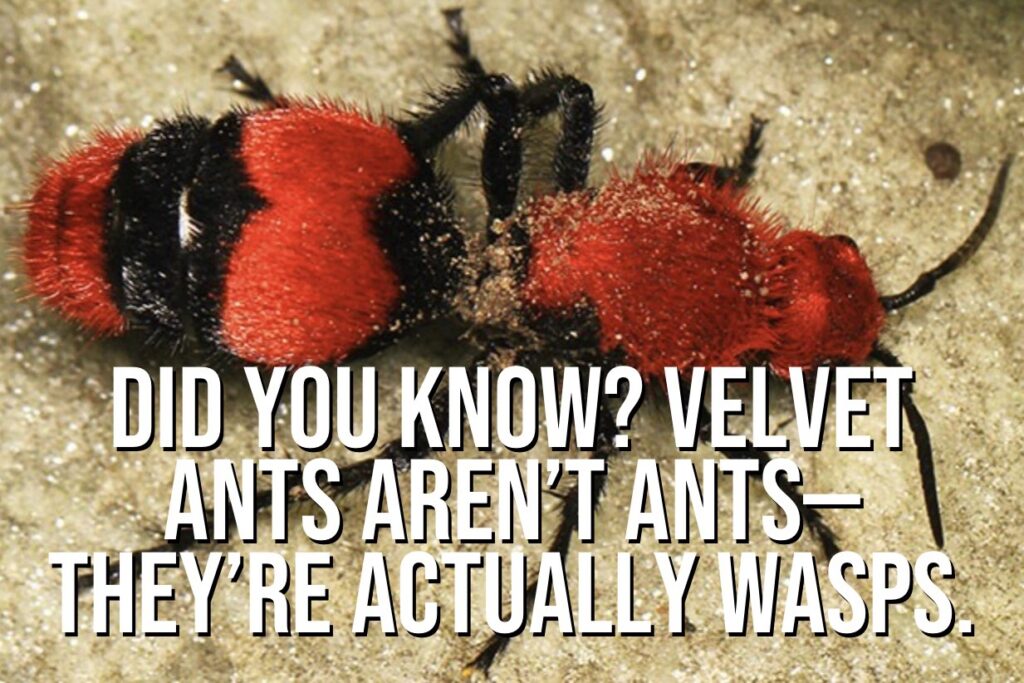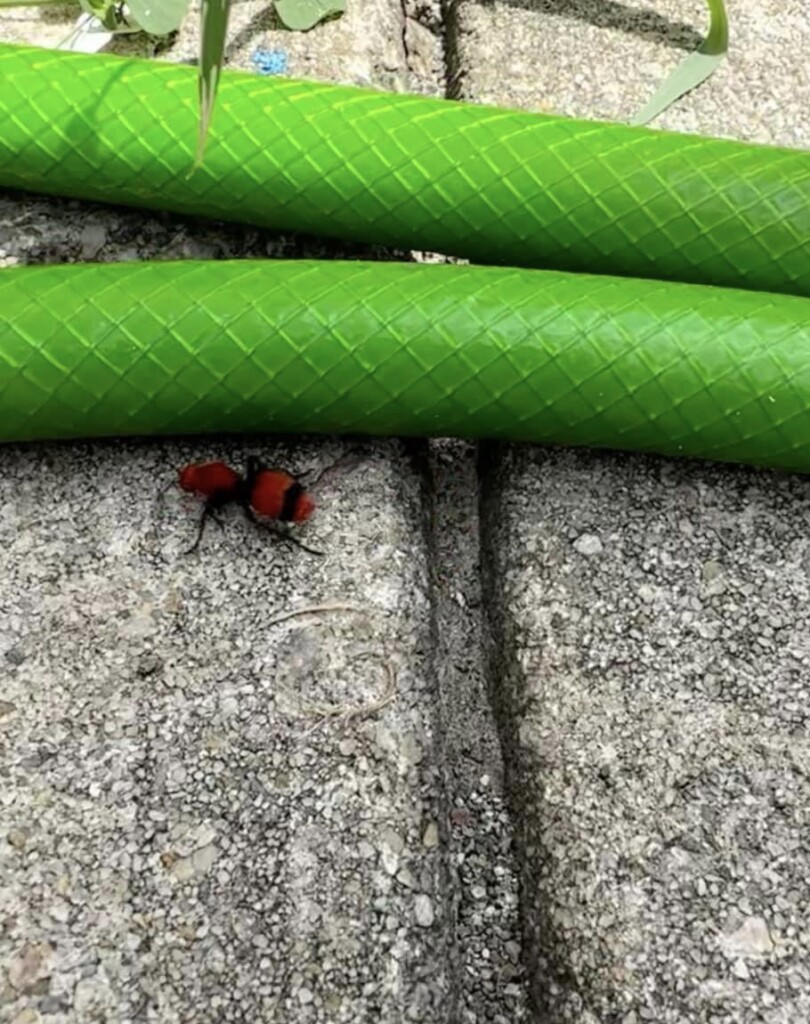
Nature is filled with captivating and often misunderstood creatures, and the velvet ant – famously dubbed the “cow killer” – is no exception. Despite its alluring appearance, this wingless wasp harbors potent defenses and a sting that can be painful and memorable. In this article, we’ll delve into the world of the velvet ant, exploring its distinctive characteristics, the reasons it’s considered “bad,” and what steps you can take to handle encounters with caution.

A Deceptive Beauty:
Visual Charisma: The velvet ant’s striking appearance is a blend of beauty and intrigue. Its velvety coat and vibrant colors can easily draw attention, making it a unique subject of interest for observers.
The Cow Killer Myth:
Misleading Moniker: Though known as the “cow killer,” the velvet ant doesn’t actually harm cows. The name stems from the misconception that its sting is potent enough to kill a cow. While that’s not true, the sting can be painful and cause discomfort.
The Notorious Sting:
Intense Pain: The velvet ant’s sting packs a punch. Victims often describe the pain as excruciating and lingering, comparable to being burned or electrocuted. It’s an experience that leaves a lasting impression.
Distinctive Traits:
Wasp-Like Characteristics: Despite its name, the velvet ant is not an ant but a wingless wasp. Its bright colors serve as a warning to potential predators that it carries potent defenses.
Nocturnal Habits: Velvet ants are most active during the night, seeking out the nests of other insects, such as bees and wasps, to lay their eggs. Their parasitic behavior can lead to concerns among beekeepers.
Handling Encounters:
Caution is Key: If you encounter a velvet ant, it’s essential to exercise caution. Avoid provoking or handling them, as their sting can lead to intense discomfort.
Observation from Afar: Appreciate these creatures from a safe distance. If you’re curious about their behavior or appearance, consider observing them through binoculars or cameras equipped with zoom lenses.
Conclusion: Respect and Caution in Nature’s Realm:
The velvet ant, while fascinating in its own right, demands respect due to its potent sting and parasitic behavior. Its “cow killer” moniker speaks to the misconceptions that often surround nature’s creatures. By understanding its characteristics and exercising caution in its presence, we can appreciate the intricate web of life that exists within our natural surroundings. As we navigate encounters with unique creatures like the velvet ant, a blend of awe and caution can help us strike a harmonious balance in the captivating tapestry of our ecosystem.
As an Amazon Associate we earn from qualifying purchases through some links in our articles.



